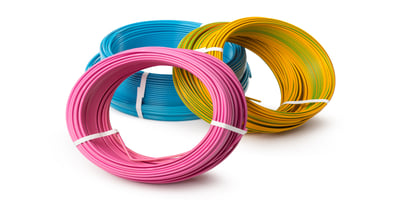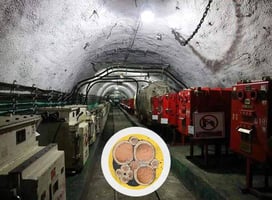Copper electric cables are essential components in electrical systems, providing the necessary...
Why Do You Need a Triplex Wires?
Electrical wiring is a critical component of modern infrastructure, and selecting the appropriate type of wire is essential for ensuring the safety, efficiency, and reliability of electrical systems. Triplex wires, a specific type of electrical wiring, are commonly used in residential, commercial, and industrial applications.

This document explores the necessity and advantages of triplex wires, delving into their construction, uses, benefits, and considerations for installation.
Understanding Triplex Wires
Triplex Wires consist of three individual conductors twisted together. Typically, two of these conductors are insulated with thermoplastic material, and one is bare or sometimes also insulated, serving as a neutral or ground wire. The structure of a triplex wire generally includes:
- Hot Wires: Two insulated conductors that carry the current.
- Neutral Wire: A bare or insulated conductor that completes the electrical circuit.
These wires are often made of aluminum or copper, with aluminum being more common due to its lightweight and cost-effectiveness. The insulation is typically made from durable materials such as cross-linked polyethylene (XLPE) or polyvinyl chloride (PVC).
Applications of Triplex Wires
Triplex wires are used in various applications due to their robust construction and reliability. Key applications include:
- Overhead Service Drop: Triplex wires are widely used for overhead service drops, where they connect the utility company’s power lines to a building’s service entrance. They are designed to withstand environmental factors like UV radiation, temperature fluctuations, and physical stress.
- Rural Electrification: In rural areas, where long spans between utility poles are common, triplex wires are preferred for their durability and ability to span large distances without excessive sagging.
- Temporary Power Distribution: Triplex wires are also employed in temporary power setups, such as construction sites or outdoor events, where they provide reliable and safe electrical distribution.
Advantages of Triplex Wires
The popularity of triplex wires in various applications can be attributed to several significant advantages:
- Durability: The construction of triplex wires makes them highly durable and capable of withstanding harsh environmental conditions. The insulation materials protect against moisture, UV rays, chemicals, and physical abrasion.
- Cost-Effectiveness: Aluminum, a common material for triplex wires, is less expensive and lighter than copper, reducing both material and installation costs without compromising electrical conductivity.
- Flexibility and Strength: The twisting of the wires provides flexibility, making them easier to install, especially in overhead applications. Additionally, the twisted configuration distributes stress more evenly, enhancing the overall strength of the wire.
- Electrical Efficiency: Triplex wires offer good electrical efficiency due to their design, which minimizes energy loss over long distances. This is particularly important for rural electrification and long-span applications.
- Safety: The insulation on the hot wires and the inclusion of a neutral wire enhance safety by preventing accidental contact and ensuring a complete electrical circuit.
Technical Considerations for Triplex Wires
When selecting and installing triplex wires, several technical considerations must be taken into account to ensure optimal performance and safety:
- Voltage Rating: The voltage rating of triplex wires must match the application requirements. Typical ratings range from 600V for residential use to 35kV for industrial applications. Selecting the correct voltage rating ensures the wire can handle the electrical load without risk of insulation breakdown or overheating.
- Current Capacity (Ampacity): The current-carrying capacity of triplex wires depends on factors such as the conductor size, insulation type, and ambient temperature. It is crucial to choose wires with adequate ampacity to prevent overheating and ensure safe operation.
- Installation Environment: The environment in which triplex wires are installed influences the type of wire and insulation required. Factors like temperature extremes, chemical exposure, and mechanical stress must be considered to ensure the longevity and performance of the installation.
- Compliance with Standards: Triplex wires must comply with national and international electrical codes and standards, such as the National Electrical Code (NEC) in the United States. Compliance ensures the wires meet safety and performance criteria, reducing the risk of electrical hazards.
Conclusion:
Triplex wires are indispensable in modern electrical infrastructure due to their durability, cost-effectiveness, and safety. They serve a wide range of applications, from overhead service drops to rural electrification, ensuring reliable power distribution. By adhering to best practices and considering emerging innovations, professionals can optimize their use of triplex wires. The environmental benefits and ongoing advancements further enhance their importance in sustainable and efficient electrical systems. Thus, triplex wires remain a cornerstone of effective electrical engineering solutions.

